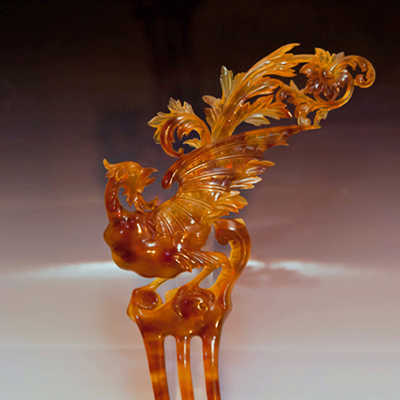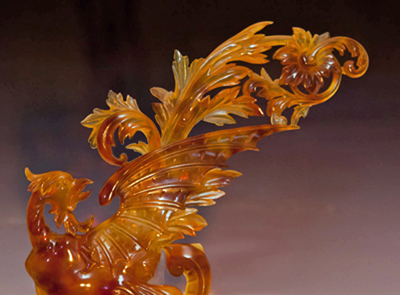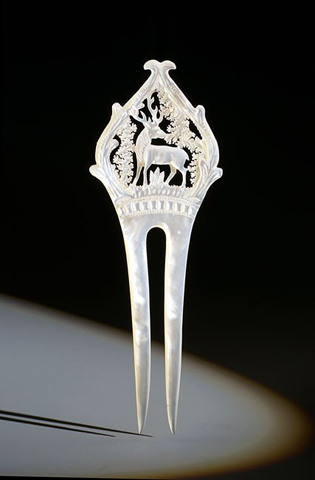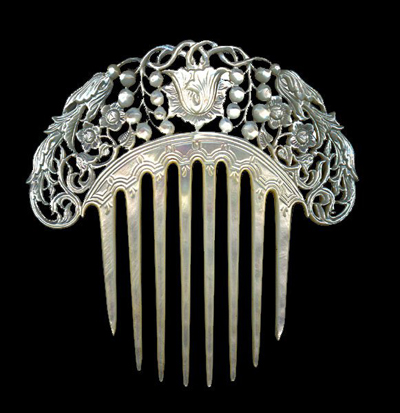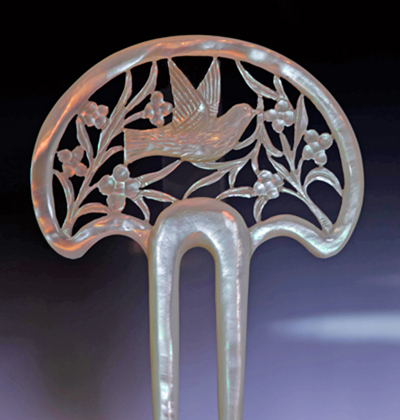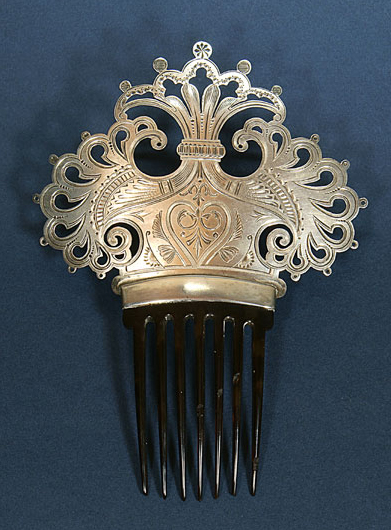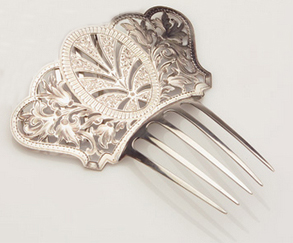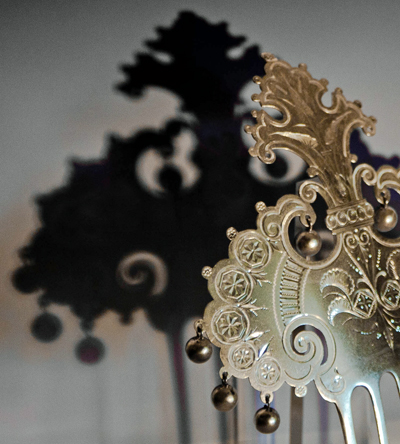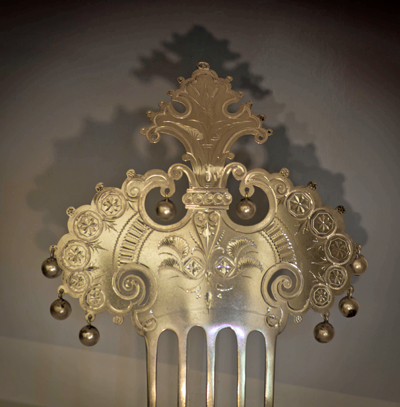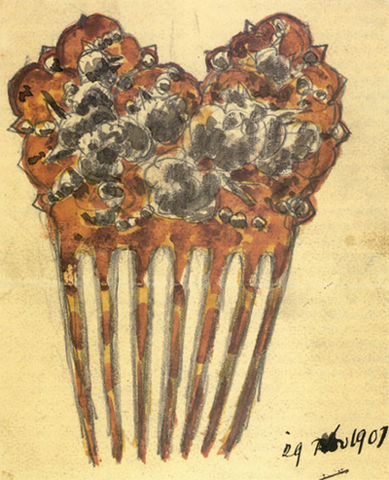par Jessica Beauchemin:
Une réflexion, un questionnement qui habite présentement ma démarche…
l’esthétique et l’utilité dans les ornements de coiffure contemporains.
L’esthétique est établie par plusieurs éléments : les formes, les couleurs,
les techniques, les matériaux employés, etc. Dans l’univers des ornements de
coiffure, ces éléments sont très variés. Prenons simplement l’exemple de la
forme, on peut parler soit de peignes, d’aiguilles, de couronnes, de
diadèmes, de barrettes, et ainsi de suite. Les époques, les cultures et les
modes ont modelé ces différents éléments. Ainsi, de nos jours, il me semble
exister une grande ouverture au niveau de l’esthétique de l’ornement de
coiffure.
La question de l’utilité m’apparaît plus délicate. D’un point de vue
littéral, l’ornement de coiffure se veut un accessoire-bijou décorant et/ou
supportant la coiffure. Certaines époques et cultures ont associé aux
ornements de coiffure des fonctions symboliques et sociales plus larges –
spiritualité, fertilité, rapport à l’autre, etc. Qu’en est-il maintenant?
L’ornement de coiffure contemporain est-il prisonnier de sa première
utilité, victime de son identité d’accessoire de tête?
Ne pourrait-il pas être, également, un média d’expression artistique
reconnu?
C’est-à-dire une « esthétique » inspirant la création d’ornements-sculptures
non utilitaires; telle, par exemple, la courtepointe. Traditionnellement
connu comme un objet utile au quotidien, la courtepointe a su évolué pour
devenir également un mode d’expression artistique accepté : la courtepointe
d’art. Peut-il en être de même pour l’ornement de coiffure?
Existe-t-il une ouverture, un intérêt, un marché pour l’ornement de coiffure
d’art contemporain?


